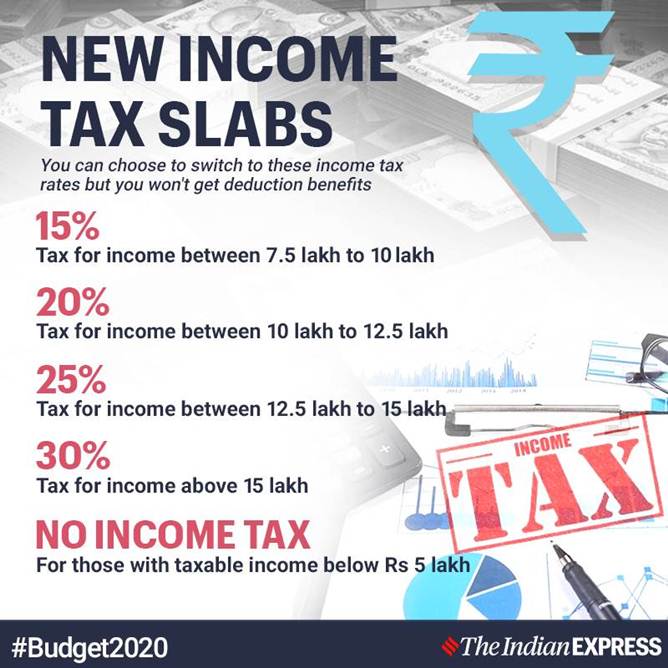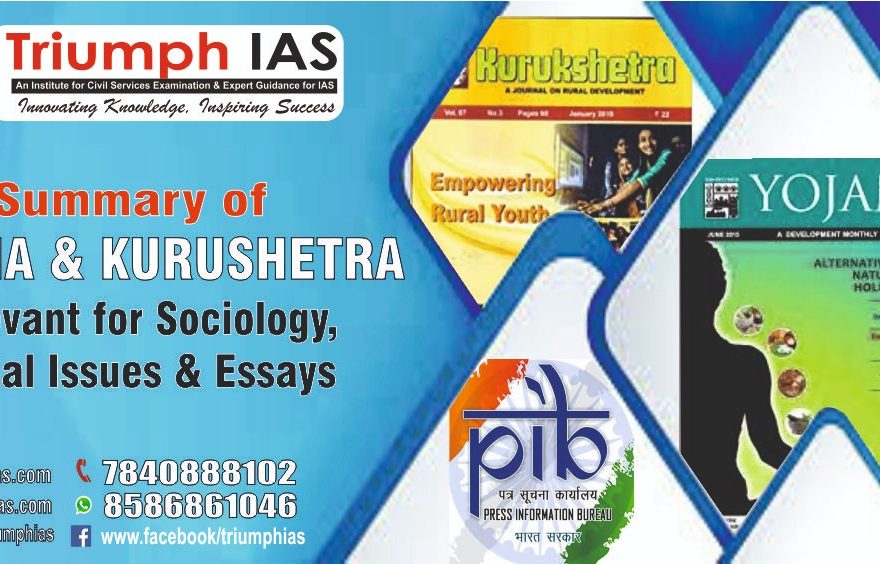Relevance: Prelims/Mains: G.S paper III: Economy: Union Budget

Introduction:
• Budget this year is woven into three major themes; Aspirational India, Economic Development and a Caring Society.
• In line with the Prime Minister’s dream of ‘Sabka Saath, Sabka Vikas, Sabka Vishwas’; addressing the aspirations of India;
• It aims to provide better standards of living through improved access to health and education.
• Furthering sustainable growth and economic development, it aims to promote the private sector and ensures we develop a harmonious and caring society, which looks after each individual’s needs and benefits.
• The agriculture and allied activities sector, in the recent past, has been going through several ups and downs. However, the government remains committed towards the target of doubling farmer’s income by 2022.

Key objectives:
• The budget highlights 16-action points which cover almost all aspects of the agriculture and allied activities sector.
• There remains a high disconnect between the agricultural output and low farmer income due to supply bottlenecks.
• The budget aims to provide support for an end-to-end value chain and puts emphasis on warehouse storage and development. Significant attention has been given to the development of the blue economy and through that, India’s coastal regions.
• The move to create a cold supply chain, and launching refrigerated coaches with the help of Indian Railways is a welcome move towards improving the shelf-life of perishable produce.
This budget recognises the need to keep pace with frontier technologies.
• Service sectors constitute a major share of the economy and these steps are sure to boost growth in these areas, especially the IT services.
Scope for India:
• It is estimated that within the next decade, India would have the largest working age population.
• We can only reap the benefits of this demographic dividend if we take the necessary steps now.
• It is important to note that while having a large labour force is advantageous, appropriate skilling is crucial for improving productivity through New Education Policy.
Measures taken by the government:

• The Prime Minister has strongly advocated entrepreneurship and start-ups for driving growth and India has emerged as a major start-up ecosystem globally.
• To further encourage this movement, the budget has made provisions to provide tax relief in ESOPs (Employee Stock Ownership Plan) held by employees in start-ups.
• The government’s decision to set up a seed fund to support start-ups in their early stages should provide immense boost to budding entrepreneurs.
• The government has introduced several measures for the financial sector. An important step is opening up of the bond markets to foreign investors and extending the investment limit in outstanding corporate bonds by FPIs to 15% from the current 9%.
• The government also plans to launch a new Debt-ETF, comprising primarily of Government securities. The benchmark 10- year bond would be a great place to start given its high liquidity.
• These steps will help to; increase the depth of the bond market and providing financial intermediaries viable options for funding thereby reducing their dependence on Scheduled Commercial Banks.
Role of MSMEs in GDP contribution:
• Micro, Medium, and Small Enterprises (MSMEs) contribute nearly 29% to the country’s GDP.
• This budget provides sufficient financing relief to the sector.
• As the major lenders in this sector, finances from NBFCs (Non-Banking Financial Corporations) will now be facilitated through the TReDs platform to facilitate the strained working capital.
• Moreover, in lieu of the on- going struggle faced by NBFCs, the budget proposes to move their eligibility limit for debt recovery under SARFAESI Act to an asset size of Rs. 100 crore or loan size of Rs. 50 lakhs.
Improve the functioning of PSUs:
• The government remains committed to improve the functioning of PSUs.
• The move to float LIC publicly will not only bring in additional revenues for the government, but also increase transparency in the functioning of the organisation.
• The government’s step to increase the decades old deposit insurance coverage of Rs. 1 lakh to Rs. 5 lakh.
• The government has proposed to sell holding of Government in IDBI Bank.
• The government have also proposed the recovery eligibility limit for NBFCs reduced to asset size of 100 crore or loan size of 50 lakh.
• An important step towards long-term sustainable growth and employment is the government’s announcement of the National Infrastructure Pipeline (NIP).
• The budget provides adequate funding to the tune of Rs. 22,000 crore equity support to infrastructure finance companies, which could be leveraged further and create long-term debt finance for projects.
• The government has taken several steps to increase transparency and improve the credibility of its data. Through the budget, it has been decided for the first time, to report extra budgetary items, in terms of bonds and loan borrowings.
Towards completing economic challenges:
• Much like the overall economy, which has undergone various structural reforms, the budget also makes an important shift from the past by encouraging wealth creation.
• The move towards gradually simplifying the corporate and personal tax regimes is an important step to restore the confidence back in the economy.
• The taxpayers’ charter will also help to enhance the trust of investors and corporates in the government. It is quite unfounded that the markets registered a loss right after the budget.
• The markets were probably expecting some demand mobilizing policies or major personal tax cuts however, once the market realized the long-term structural reforms, it recovered all its losses in the next two days.
• This budget realizes and recognizes challenges towards achieving higher growth. In the last six months, since the formation of the new government and the announcement of budget (FY20) with it, the government has taken numerous steps which would allow the economy to reap benefits in the medium term.
• The fine balancing act by the government, using the ‘escape clause’ under the FRBM Act, is a statement enough. Even with the challenging revenue collection scenario, the government continues to commit to adequate expenditure levels while maintaining fiscal prudence.
Conclusion:
• The budget is sound, rational and ticks all the boxes. Keeping in mind the challenges to economic growth, it strives to address short, medium and long-term growth prospects equally, without shocking the system.
• The budget goes a long way towards our goals of building an aspirational India. The steps taken over the recent past will drive us towards the target of becoming a USD 5 trillion economy.
For more such notes, Articles, News & Views Join our Telegram Channel.
Click the link below to see the details about the UPSC –Civils courses offered by Triumph IAS. https://triumphias.com/pages-all-courses.php


